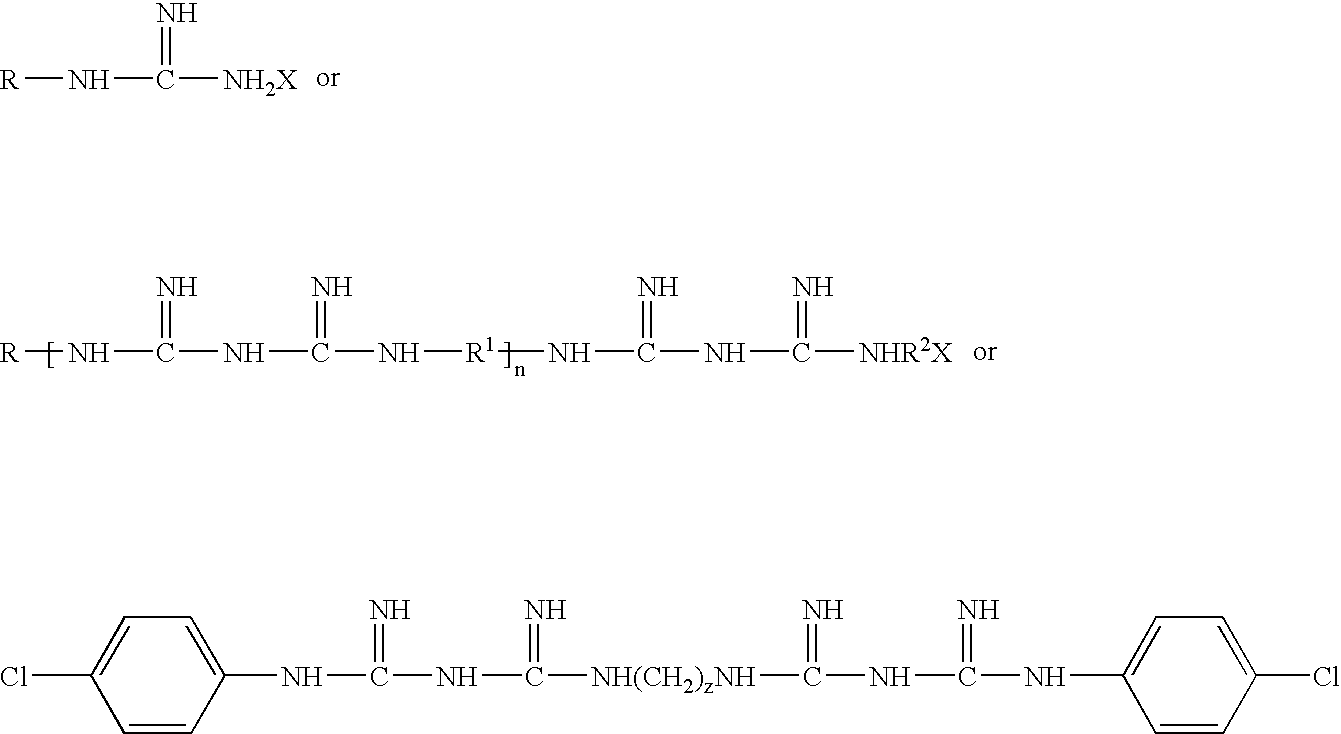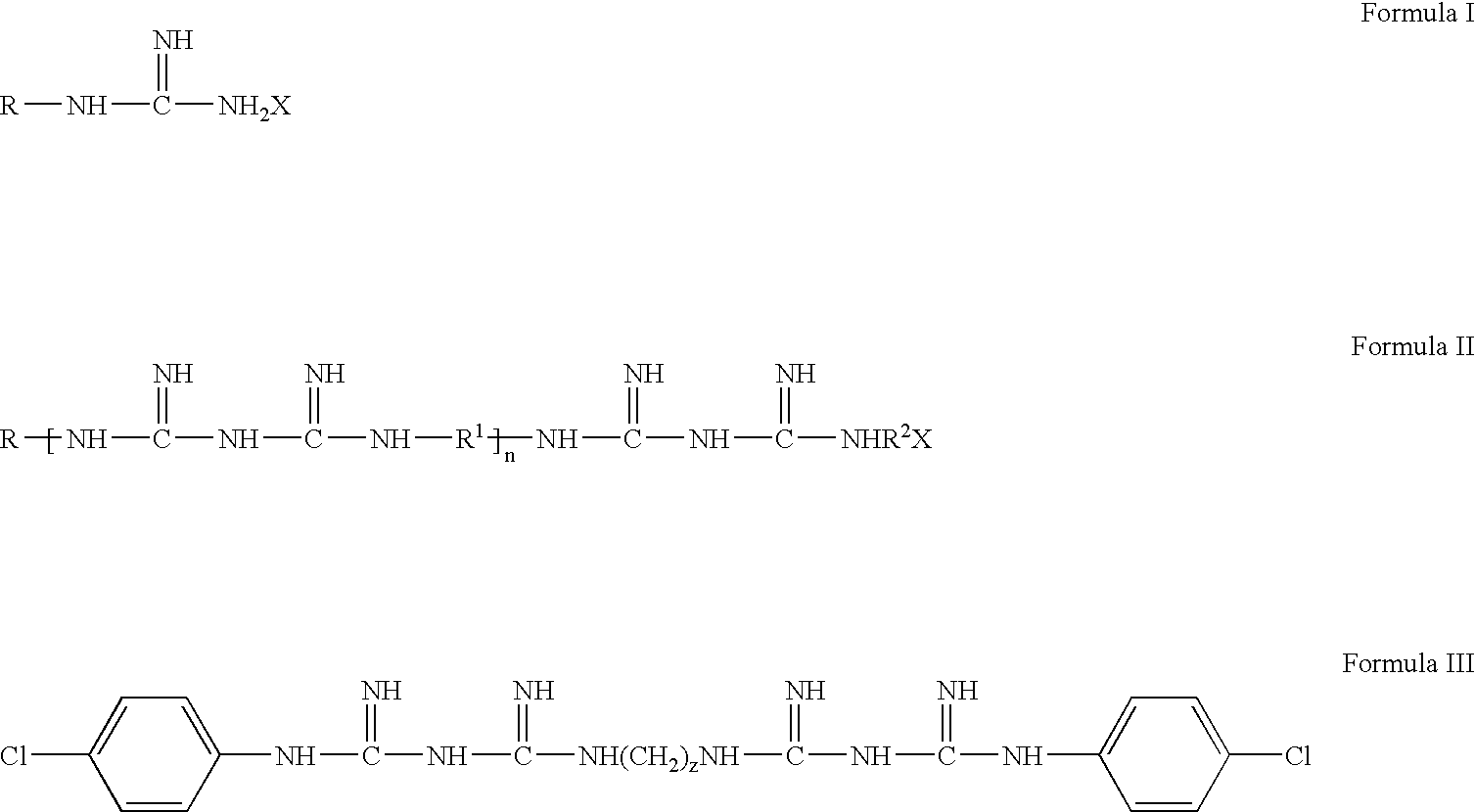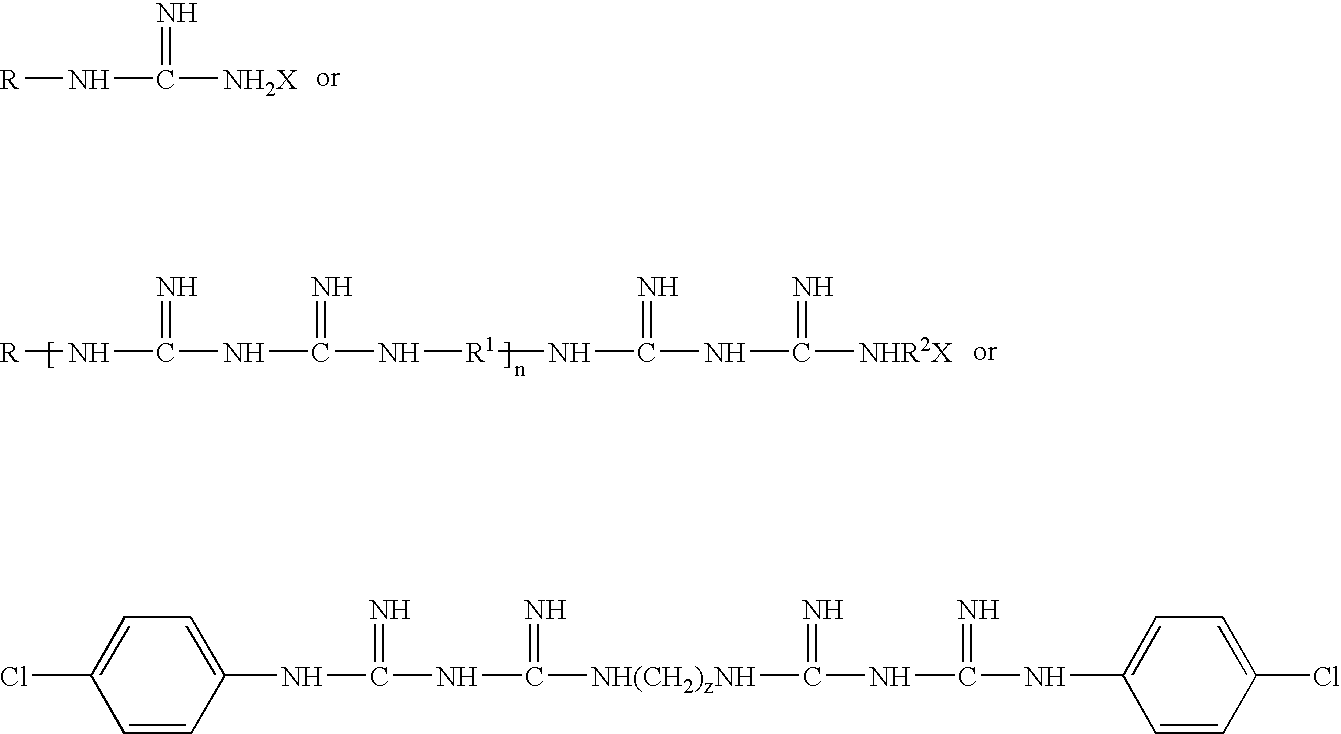Control of protozoa and protozoan cysts that harbor Legionella
a technology of protozoa and protozoan cysts, applied in the field of methods for controlling legionella, can solve the problems of inability of protozoa to readily degrade engulphed i, and the major cause of human morbidity and mortality of intracellular bacterial pathogens
- Summary
- Abstract
- Description
- Claims
- Application Information
AI Technical Summary
Problems solved by technology
Method used
Image
Examples
Embodiment Construction
It has been discovered that unique guanidine and biguanidine salts are effective at controlling Legionella type bacteria in the free living state as well as when engulphed in protozoa in the trophozoite form or Acanthamoeba in cyst form. The ability to control materials in the cyst form as well as the trophozoite form at comparable treatment levels is an unexpected feature of the treatment of the present invention.
It was discovered that the guanidine and biguanidine salts of the general formula are especially effective:
wherein R, R1, R2 are independently H, C1-C20 substituted or non-substituted alkyl (linear or branched) or aryl, X is an organic or inorganic acid, n is 0-20 and z is 1-12. In the formulas above, X is e.g., hydrochloric, sulfuric or acetic acid.
The efficacy of the present invention was determined by evaluating the effect of a variety of treatments on the mortality of Tetrahymena, Acanthamoeba trophozoite, and Acanthamoeba cysts according to the following proce...
PUM
| Property | Measurement | Unit |
|---|---|---|
| Concentration | aaaaa | aaaaa |
Abstract
Description
Claims
Application Information
 Login to View More
Login to View More - R&D
- Intellectual Property
- Life Sciences
- Materials
- Tech Scout
- Unparalleled Data Quality
- Higher Quality Content
- 60% Fewer Hallucinations
Browse by: Latest US Patents, China's latest patents, Technical Efficacy Thesaurus, Application Domain, Technology Topic, Popular Technical Reports.
© 2025 PatSnap. All rights reserved.Legal|Privacy policy|Modern Slavery Act Transparency Statement|Sitemap|About US| Contact US: help@patsnap.com



